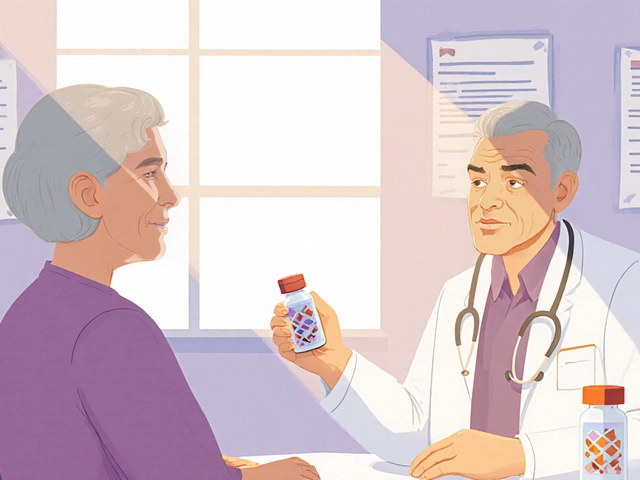Hair loss: what really causes it and what to try first
If your hair started falling out after a new medication, you’re not imagining things. Drugs can push hair into a resting phase (telogen effluvium) or, less often, trigger patchy loss. Other common causes include genetics (androgenetic alopecia), stress, nutrient gaps, and thyroid problems. The first move is simple: figure out whether this is sudden shedding, slow thinning, or patchy loss.
Start by checking timing. Did shedding begin weeks to months after starting a drug, a big illness, or a diet change? Medication-related loss often shows up 2–3 months after the trigger. If that fits, talk with your prescribing doctor before stopping anything — sometimes adjusting dose or switching drugs helps.
Practical steps you can take now
1) See a clinician who examines your scalp and reviews meds. If meds seem likely, your doctor may suggest alternatives or a temporary pause. Read our detailed look at drugs that can cause hair loss in “RA Medications and Hair Loss: Methotrexate, Sulfasalazine, Biologics Explained.”
2) Try proven topical options. Minoxidil is the go-to over-the-counter choice for many types of thinning. It won’t help every case, but it can kickstart regrowth for androgenetic hair loss and support recovery after telogen effluvium. If you’re considering prescription options like finasteride or Propecia, check our comparison piece “Best 2024 Alternatives to Propecia for Hair Loss” to weigh pros and cons.
3) Look into targeted therapies. For drug-induced or patchy loss, dermatology procedures like PRP (platelet-rich plasma) or a steroid injection may be recommended. Our article “Dermatologist-Approved Treatments for Drug-Induced Alopecia” outlines what works and what to expect.
Daily care and lifestyle that actually help
Swap harsh styling for gentler routines: loose hairstyles, soft brushes, and low-heat styling. Eat protein-rich meals and check ferritin, vitamin D, and thyroid levels — fixing these often reduces shedding. Supplements like biotin help in specific deficiencies, but they’re not a cure-all. If you’re on drugs that also affect hormones (for example, some RA meds or valproic acid), coordinate tests and follow-up with your doctor.
If your medication helps a serious condition, weigh the benefits before stopping it. Many people see hair return once the drug is changed or stopped. While you wait for regrowth, topical minoxidil, scalp-friendly habits, and targeted dermatology treatments can make a big difference.
Want targeted reading? Check our guides on drug-related hair loss and treatment options to find articles that match your case. If shedding is heavy, sudden, or comes with pain or scarring, get to a physician quickly — some causes need fast action.
Dealing with hair loss is frustrating, but a clear plan — medical review, simple daily care, and evidence-backed treatments — gives you the best shot at recovery.
I recently came across a fascinating connection between autoimmune disorders and alopecia, a condition that causes hair loss. It turns out that many autoimmune disorders can lead to alopecia, as they cause the immune system to attack healthy hair follicles. This results in hair loss, either in small patches or across the entire scalp. It's important to consult a medical professional if you're experiencing hair loss, as it could be a sign of an underlying autoimmune disorder. Understanding this link can help raise awareness and lead to better treatment options for those affected.
View Details

